Last Updated on March 5, 2024
Hello again, everybody. JoBlo.com here bidding you a big Wahoo welcome to WTF Happened to This Movie?! That’s right, the Cleveland Indians are well on their way to clinching the AL East – which means the 1989 sports comedy Major League is well on its way to becoming a classic of the genre.
But how did Major League reach this status? How did it become one of the most quotable comedies of the decade? How did the cast pull off pitching, swinging and winning like a professional baseball team? How did it go on to represent Cleveland even though it wasn’t even shot there? And why did they have to make those sequels? Well, let’s go juuuuuust a bit outside to find out: WTF Happened to this Movie?!
You might be surprised to know that Major League comes courtesy of the same guy who won an Oscar for writing The Sting. But David S. Ward is a huge Cleveland Indians (now Guardians) fan, even though they’re far from being the pride of the city, as they hadn’t been to a World Series since 1954 by the time Major League came out. Hey, according to Harry Doyle, they offered free admission to anyone alive when the Indians last won the pennant! But it’s this “Cleveland disease” that pushed Ward to write Major League, saying, “I wanted to do a film about an underdog team and I can’t think of a more underdog team than Cleveland.” Ward also knew the Indians doing so well would have to be a comedy!
Still, studios didn’t think people would want to see a baseball movie, as the MLB was hitting its stride on national television. But there was at least some precedence in the ‘80s, as both The Natural and Bull Durham were hits.
Once Ward finished the screenplay – which he started writing in 1984 – it had to get approval from Bob DiBiasio, senior vice president of public affairs for the Indians. After that, it went out, attracting Charlie Sheen early on, with the eventual Rick “Wild Thing” Vaughn saying it was as good as Platoon’s and even comparing it to crack.
As for Vaughn, the uncontrollable pitcher from the California Penal League was a perfect role for Sheen, who actually played high school ball – although he couldn’t throw faster than 88 mph, practically a lob compared to Vaugn’s 101. Joining Sheen would be fellow Platoon co-star Tom Berenger as aging catcher Jake Taylor (right after he made the underrated Shoot to Kill). Manning third base – except when he’s purposely missing ground balls so as not to ruin his pretty face – was Roger Dorn, played by Corbin Bernsen.
The notables taking to the outfield (the rest of those in the dirt didn’t get much screen time) were Willie Mays Hays and Pedro Cerrano. Wesley Snipes actually turned down a role in Do The Right Thing to play Hays, partly inspired, of course, by Willie Mays. But his audition was far from easy, as he was made to run bases – except he wasn’t in any baseball gear, and so couldn’t gain traction (Hays fared much better in his pyjamas). Haysbert, as the voodoo-loving Cuban Cerrano, was based on the famed Alou brothers and even Wade Boggs, who had his own superstitious habits. Like Sheen, Snipes and Haysbert proved they were perfectly cast, as the former caught a near-homerun and the latter was smacking home runs, including the one in the climactic game.
These skills were discovered during a modified two-week spring training session led by Dodgers catcher Steve Yeager (who was also cast as the team’s third base coach and would even serve as Berenger’s stand-in at points). He coached the prospects in learning more about the game and conditioning. After all, Ward needed a cast who could, well, throw a ball and handle a bat. As he said, “It was really important to us to get a group of guys who looked like they could actually play. They’re not professional quality, but you aren’t going to look at them and say, ‘That guy can’t play.’” But not everybody could {ahem} swing it, like Skip Griparis, who landed Bob Uecker’s co-color commentator Monte instead. And Jeremy Piven didn’t make an impression at all, as his scenes as a heckler were cut. When Vaughn isn’t on the mound, there’s spitballer (or is it snotballer?) Eddie Harris, played by Chelchie Ross.
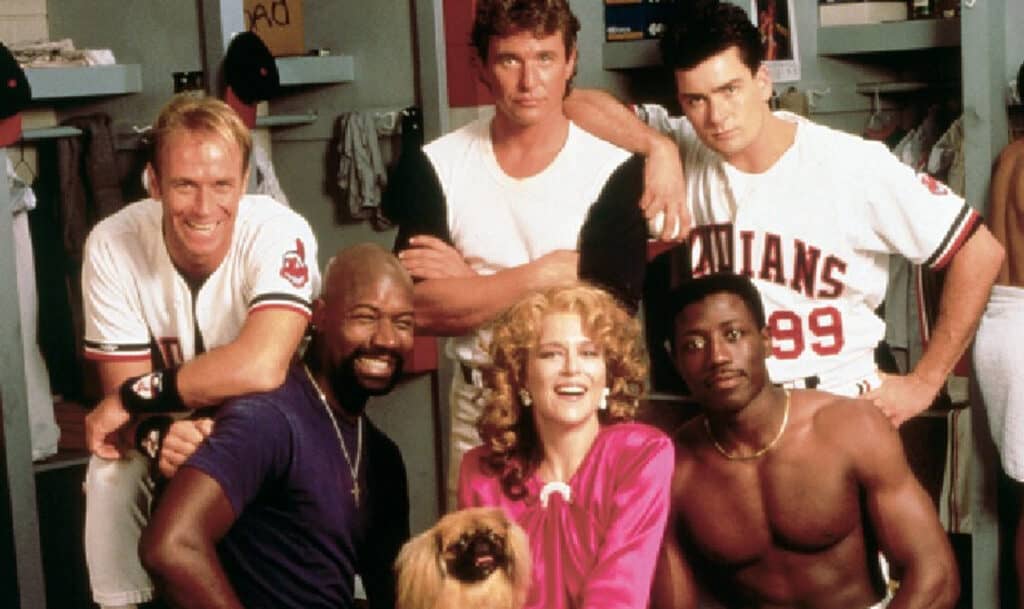
Handling manager duties as Lou Brown – formerly of the Toledo Mudhens – would be James Gammon, while ex-showgirl-turned-owner Rachel Phelps was played by Margaret Whitton, who saw the character as a mix of controversial Cincinnati Reds owner Marge Schott (eventually ousted for being a racist Nazi lover) and Yankees icon George Steinbrenner. Speaking of Steinbrenner, the production had to get his approval to use the Yankees as the team the Indians beat in the AL East clincher; Steinbrenner agreed, apparently because of his Cleveland roots. One standout in that game was Yankees slugger Clu Haywood, who was played by Cy Young winner Pete Vuckovich.
Another MLB face in a key supporting role is the aforementioned Bob Uecker, who plays announcer Harry Doyle. Uecker is actually still the Milwaukee Brewers’ announcer, having started his major league career with them. And as you can expect, he ad-libbed most of his own classic lines. Rene Russo made her big screen debut as Lynn Weslin, Jake Taylor’s ex. The rest of the supporting cast includes Charles Cyphers, Andy Romano, and even Neil Flynn, later better known as Janitor on Scrubs. And of course, there’s Jobu, who has become a fan favorite of the Indians. In fact, the team, taking a cue from Cerrano, put up their own makeshift shrine with Jobu during the 2016 World Series. His magic did not work…
With a budget of $11 million, Major League began production in the hot summer of 1988…in Milwaukee. That’s right, the movie based around the Cleveland Indians was shot where the Milwaukee Brewers play, as Milwaukee County Stadium stood in for Cleveland Stadium. (Keen eyes will notice a sign for WTMJ-TV, a station based out of Milwaukee.) There were a few reasons for this. For starters, the production couldn’t properly work around the schedules of the Indians and the Brown, who also played at the stadium. As it turns out, the Browns had started pre-season, so yard markings were already on the field. There, too, were union issues within Cleveland, while it also cost less to film in Wisconsin.
But Cleveland still gets its due on the screen, with the opening credits sequence – set to Randy Newman’s “Burn On”, a reference to a 1969 fire on the Cuyahoga River – showing the city’s character. Baseball-wise, some exteriors and footage were taken at their stadium, including an aerial shot done on July 3rd with 50,000+ fans in attendance. As for fans at Milwaukee County Stadium, extras came out in droves at the start…but began to dwindle once they found out they had to buy their own stadium food! Another tie to Cleveland is in Tucson, Arizona, as their then-spring training facility was at Hi Corbett Field.
Filming Major League was fairly smooth, with most of the cast having fond memories of the shoot. And how could they not, with poker games and late-night partying, like every night they went out was as if they had just won the division. The biggest drinker of them all, though, was the skipper. Beloved by the entire cast as a “manager on-screen and off”, James Gammon came in remarkably hungover on at least one documented occasion. Such were his powers that Sheen called him a “f*cking warlock.” Sheen himself kept busy by figuring out how to juggle the flight schedules of the various women he had flown in so they wouldn’t run into each other.
Sheen also took up another hobby, using steroids during the six to eight weeks of filming to enhance his performance. And while it increased his fastball speed, he admits it also brought his “asshole meter” way up. But he was a bit testy anyway, as his Rick Vaughn haircut made him the subject of harassment in bars.
On the on-set factoid side, while Sheen had an arm, the home plate was moved up 10 feet to give the illusion of faster throws. Others got some help from the production team as well in the editing room, as Willie Mays Hays’ running scenes were all put in slow-mo because Wesley Snipes wasn’t very fast.
With filming wrapped, it was time to put Major League in front of an audience…where one aspect was so reviled that Ward and company changed it and were forced into reshoots. Originally, Major League ended with a twist: Rachel Phelps never intended to move the Indians to Miami after all; in fact, she was rooting for them to win, using her string-pulling to motivate the team to victory. But a test screening revealed that audiences hated giving her a heart, which we know she didn’t have anyway based on her cardboard cutout…As such, additional reaction shots of Rachel being pissed off at the team’s success were filmed.
With the better ending in place, Major League slid into theaters on April 7th, 1989, the same week as the start of the MLB season. The movie opened at #1 with $8.8 million, beating out fellow newcomers The Dream Team, Cyborg, Dead Calm, and Rain Man, getting a post-Oscars boost. It would hold the #1 spot for another week before eventually grossing a total of $49.8 million. The Indians, for their part, would go 73-89 that season.
In the 35 years since its release, Major League would become one of the most beloved sports movies ever. The American Film Institute would nominate it as one of the 50 best ever, while an ESPN reader poll ranked it the second best baseball movie ever, not far behind Field of Dreams, which was actually released one month after Major League. From her viewpoint, Rene Russo said, “Out of all the movies I’ve ever done, that’s the one that more people come up to me to talk about. It really is a cult classic. Not even cult, really. Everybody just loves that film.”
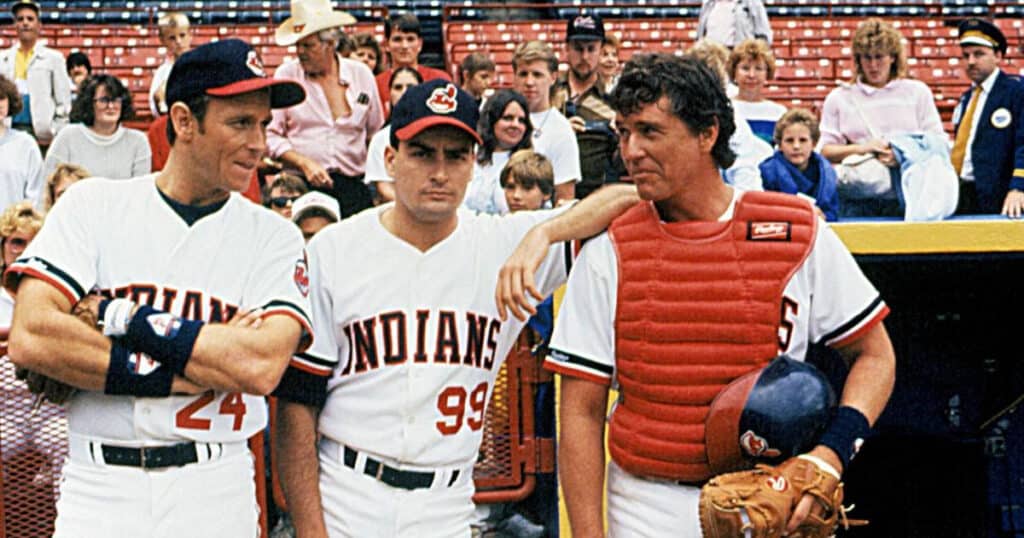
But not everybody loves the sequels, beginning with 1994’s Major League II, which reunited the director with most of the core cast, with the notable exception of Wesley Snipes, who was replaced by Omar Epps. Turns out Snipes had developed a bit of an ego; as Corbin Bernsen put it, “He’d become Wesley Snipes. That rubbed me the wrong way.” While it’s considered a dud (5% on Rotten Tomatoes), 1998’s Back to the Minors is even more distinct for just how bad it is. Even Ward – who had no involvement (unlike Corbin Bernsen, Dennis Haysbert, Bob Uecker, and Takaaki Ishibashi from Major League II) – doesn’t even consider it a real sequel. The title doesn’t even make sense!
But Ward would still absolutely revisit the series. There was even talk before of a planned third movie – a real one, that is – that would find the Indians actually winning the World Series, something he didn’t think would be logical for the first movie (hey, even dreamers have to be realistic sometimes). In 2011, cast members Charlie Sheen, Tom Berenger, Corbin Bernsen, Wesley Snipes, and even Bob Uecker all reportedly expressed interest, with Sheen saying the script was “pure gold”. This time around, we’d find Rick Vaughn trying to mentor his reluctant illegitimate son, who is also an ace pitcher.
Major League has had an impact on the world of baseball itself, too. Aside from various tributes and spoofs within the community, the city of Milwaukee has embraced the movie nearly as much as Cleveland has, hosting theme nights based around the movie. Topps even released a set of trading cards to celebrate the 25th anniversary. Ward himself also takes credit for the popularity of relief pitchers using walk-on music. And yes, Mitch Williams, who also went by “Wild Thing” and wore #99, walked out to the same song as Rick Vaughn. And according to Sheen: “That f*ckin’ guy never gave me credit.”
Poor Charlie Sheen, the star of Major League, seems to keep getting benched when it comes to the movie. When the Indians went to the World Series in 2016, it seemed like the perfect opportunity to have Sheen – as Rick “Wild Thing” Vaughn – throw out the ceremonial first pitch. And yet management never even invited him to the mound. Maybe with all that tiger blood they thought he was a Detroit fan?






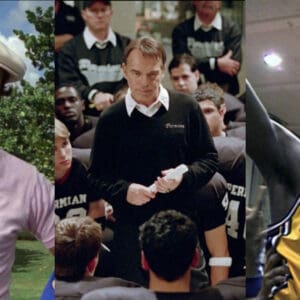
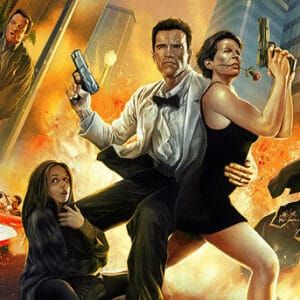
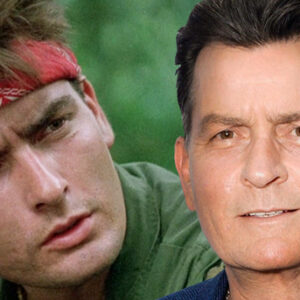

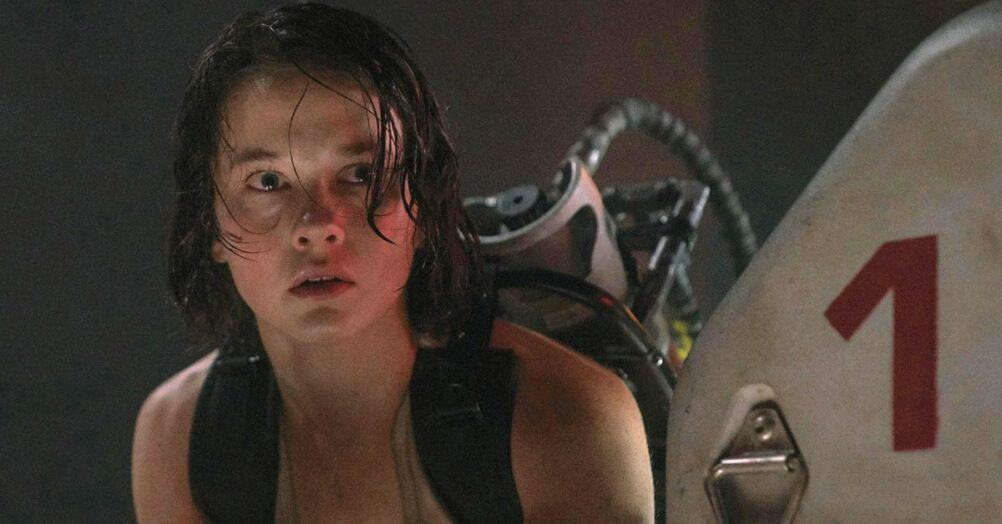


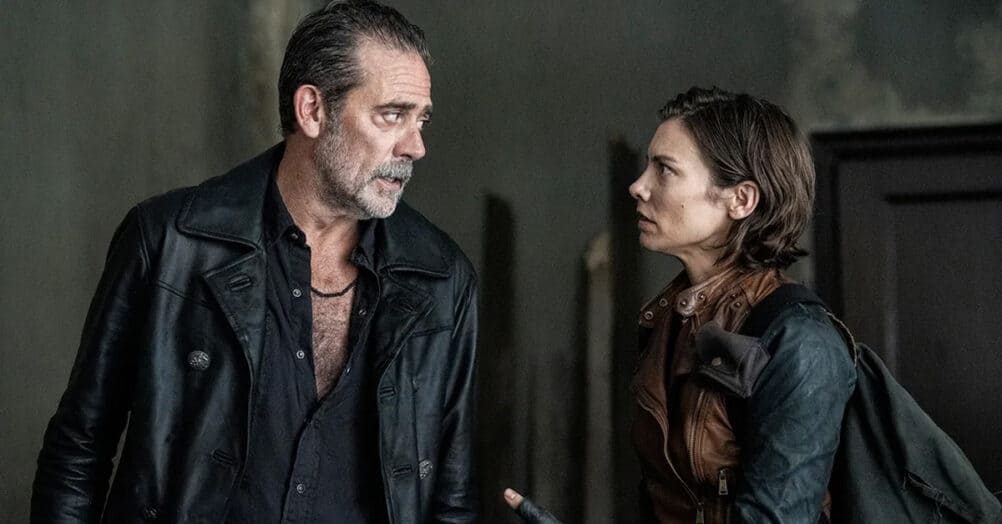
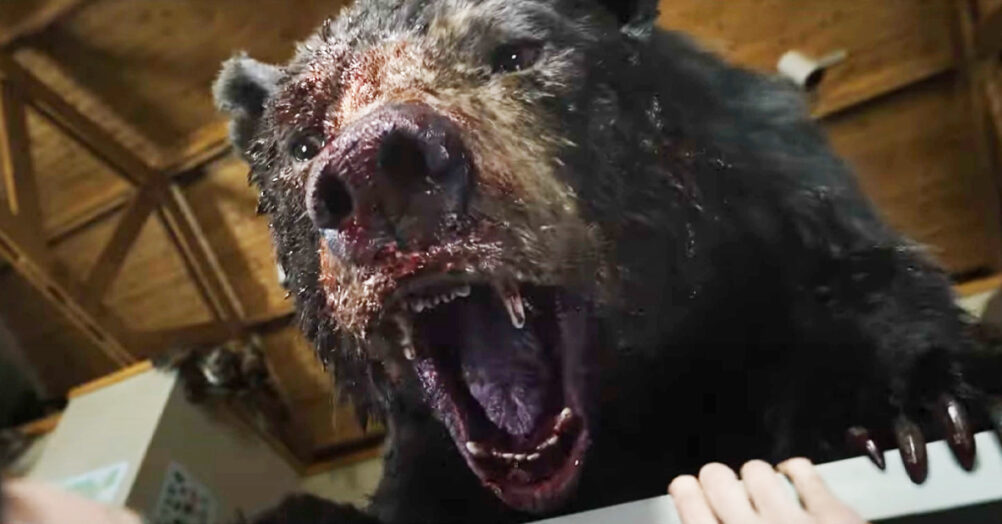


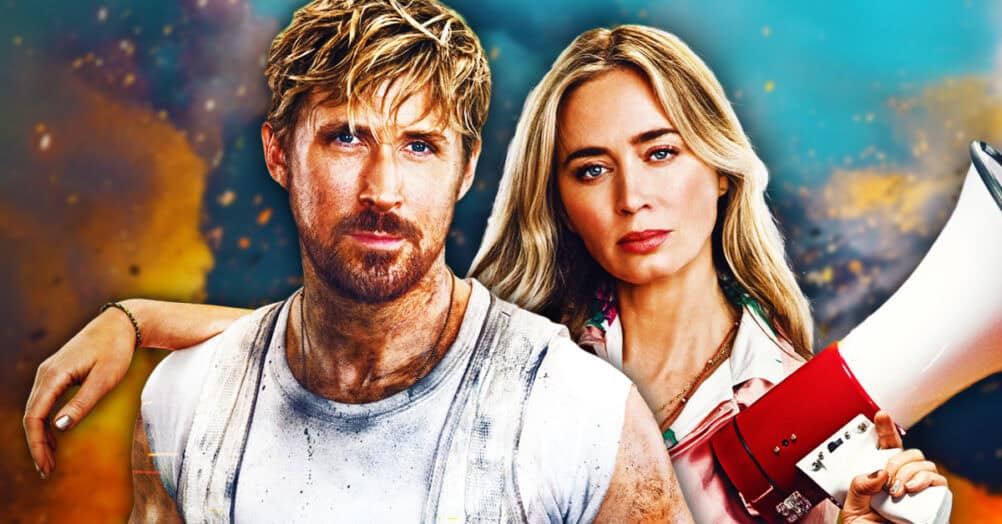

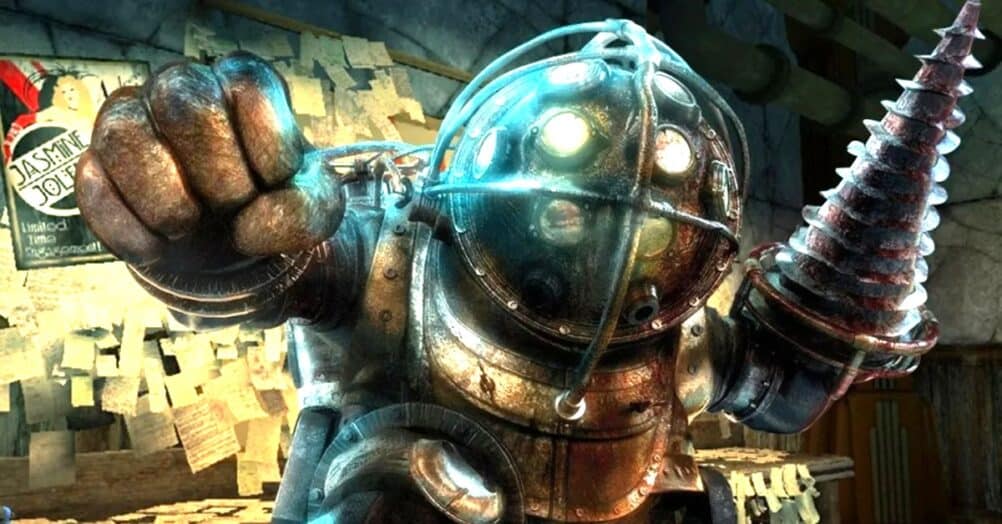
Follow the JOBLO MOVIE NETWORK
Follow us on YOUTUBE
Follow ARROW IN THE HEAD
Follow AITH on YOUTUBE